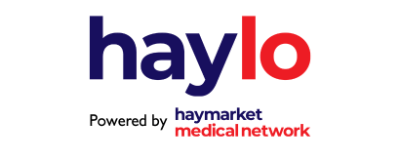- 9:50am-10:25am Media Matters: The Impact of DE&I, Tech Access, and Specialty-Rare Diseases: Planning content and media to engage the right prospects and customers in the right ways has never been simple, and the Covid pandemic upended the ‘rules’ even further. Today’s brand managers, media agencies, and digital platforms must consider an expanding list of inputs when prioritizing segments, refining targeting, and planning the optimal mix to reach increasingly ‘complex’ audiences. For example, diversity, equity, and inclusion (DE&I), technology access, and specialty and rare diseases can impact decisions about objectives, strategy, planning, execution, and measurement.
This session offers a frank discussion from several points-of-view about new considerations when planning for, reaching, engaging, and involving complex audiences. Topics will include:
Using trusted digital platforms and media to provide access and engage often hard-to-reach, underserved populations, and meet them ‘where they are’
Impact of pharma’s DE&I focus on creating and sponsoring content that matches the needs of highly specific populations
Shifts required to improve audience understanding and media planning
Changes in how patients access care, including telehealth, and opportunities with these new channels
Approaches to identify, reach, and educate patients with specialty and rare diseases
The understanding that patient out-of-pocket (OOP) costs are part of post-Covid conversations between providers and patients
- 10:40am-11:15am Tele-Story: We all know how it started, however the growth of telehealth has expanded, and the number of chapters is yet to be written. There is a unique opportunity to play a meaningful role in educating the patient and enhancing their virtual care interaction. We look at the patient experience, along with where and how we can enrich their journey, provide value and promote the brand within telehealth’s optimistic story.
- 11:20am-11:55am Get with the Programmatic: The question isn’t whether most healthcare brands are using data and programmatic technology to reach health audiences; it’s how they are executing across their media plans. With programmatic technology long since having gone mainstream, how can marketers leverage today's ad tech to reach patients and HCPs in a cost-effective way?
- 12:00pm-12:35pm Life is but a Stream: For years, healthcare marketers have been tantalized by the possibility of collaborating with the streaming world’s top platforms — and frustrated by the lack of ad-supported tiers on Netflix and Disney+. But with subscriber growth plateauing, both organizations are rethinking their previous no-ads stance. We share how healthcare marketers can prepare to take advantage of the opportunities that may soon present themselves.
- 12:40pm-1:15pm The New Social Media Order: Over the course of the pandemic, health-adjacent organizations leaned heavily on tried-and-true platforms — Facebook, Twitter and Instagram — for their marketing needs. What those organizations might not have expected was the momentum toward newer players such as TikTok and Clubhouse, both of which seized marketers’ attention and mindshare amid the fear and disruption of COVID-19. Does their sudden rise upend the social media pecking order?
- 1:50pm-2:25pm One Audience, All Channels: Unifying Digital, Audio and TV Targeting with RWD: For too long, healthcare marketers have been constrained by the limitations associated with traditional demographic, geographic and behavioral approaches to targeting that fail to consider a brand's specific market definitions and core therapeutic advantages. The result: new patients never convert and spend is wasted in the wrong channels. That has all changed through ML/AI and real world data. Now, marketers can use a single, custom audience based on their unique brand objectives to plan, activate and measure across all channels - from programmatic and social media to CTV and streaming audio, to linear TV and broadcast radio. During this engaging fireside chat, attendees will learn about:
-The pitfalls of traditional targeting methodologies
-How ML/AI can transform RWD into highly precise custom audiences
-Why it's imperative to use a single audience throughout the media mix
-Real world examples of how custom audiences increase engagement and drive script lift - 2:30pm-3:05pm Point of Care’s Post-Pandemic Game Plan: In the earliest months of the COVID-19 shutdown, the point of-care channel was forced to reinvent itself on the fly as physician’s offices closed their doors. Now that something approximating “normal” has returned, POC players are poised to build on those gains — in person at traditional venues such as offices and pharmacies and virtually via telemedicine.
- 3:20pm - 3:55pm Now Hear This: At the start of the pandemic, pundits questioned whether podcasts could thrive at a time when the volume of commuting had collapsed. As it turns out, podcasts gained in popularity during 2020 — as did terrestrial and satellite radio, and audio-only upstarts such as Clubhouse. Was it a natural pushback to COVID era screen fatigue, or a sign of what’s to come?
MM+M Media Summit
Location
THE LIVE EVENT BEGINS IN...
WELCOME TO THE MM+M MEDIA SUMMIT!
Join MM+M and a who's-who of health media experts for a candid discussion of the industry's most compelling issues: point of care's post-pandemic pivot, audio's aural appeal, health-friendly evolutions in out-of-home ad tech and much more.
November 7, 2022
9:00 a.m. - 5:00 p.m. ET
PANEL TOPICS
SPEAKERS
THANK YOU TO OUR SPONSORS















For sponsorship opportunities, please contact:
Doreen Gates | 267.679.7444|doreen.gates@haymarketmedia.com
For event inquiries, please contact:
Zakaila Cimone | zakaila.cimone@haymarketmedia.com
Copyright © 2022 Haymarket Media, Inc. All Rights Reserved - Haymarket Media's Privacy Policy and Terms & Conditions.
